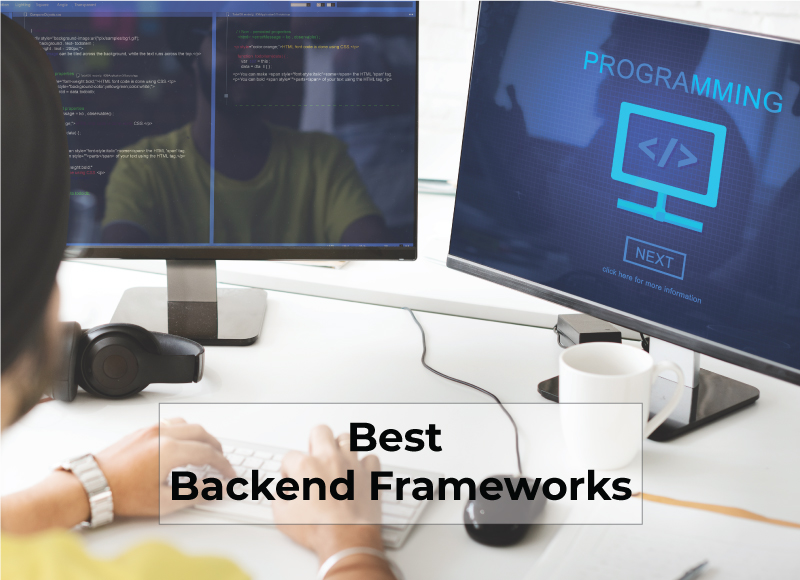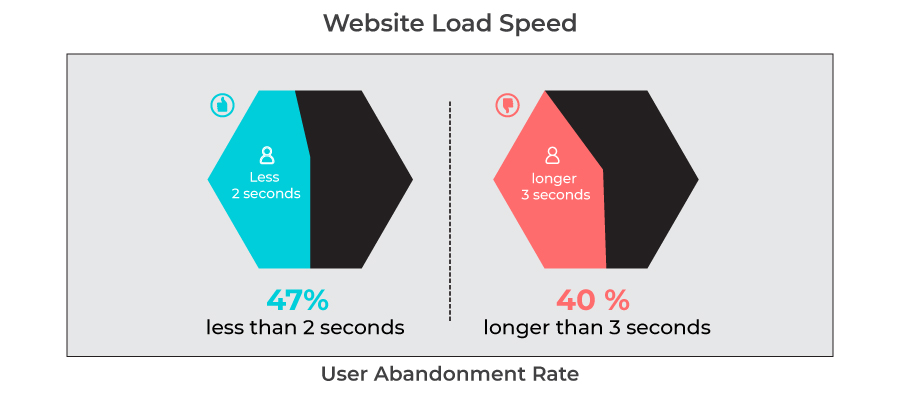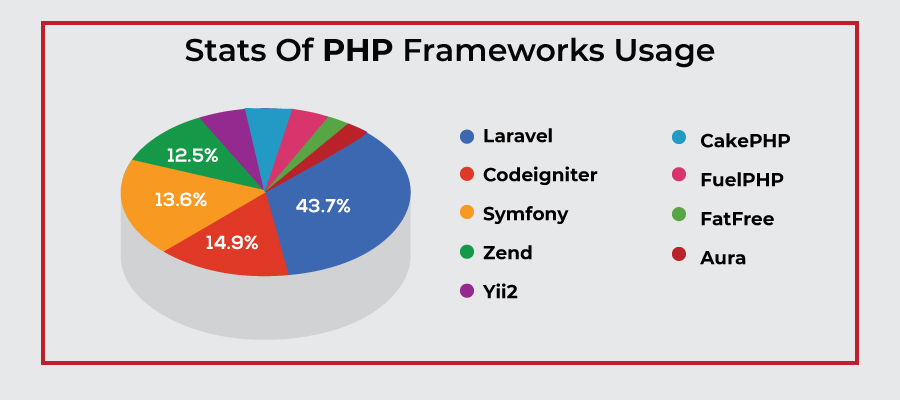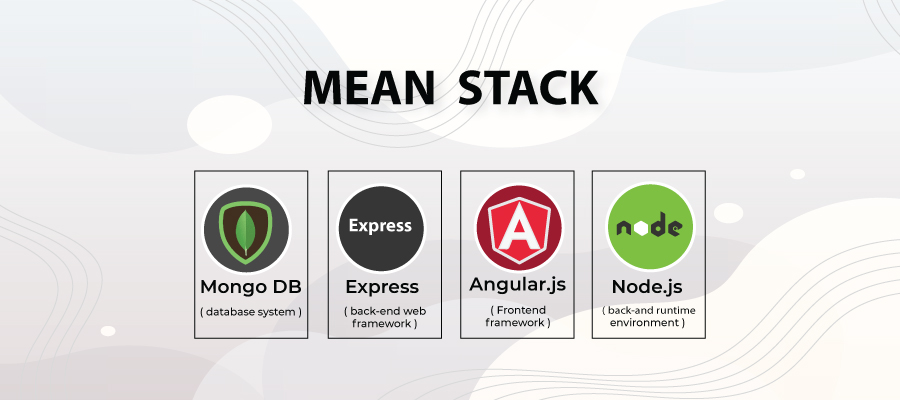- Home
- Blogs
Top 12 Backend Frameworks for Web Development in 2023
Developers are constantly looking for web development frameworks that can simplify the process of web application development. If you also want to know about some of the top web frameworks, this blog is for you.

Developers are constantly looking for web development frameworks that can simplify the process of web application development. If you also want to know about some of the top web frameworks, this blog is for you.
Do you know an improved web speed can prevent the loss of about 7% of possible conversions? Today, around 47% of people expect a web page to load within 2 seconds. This makes web speed a significant factor in your business, so you need strong backend support. It will lay a strong foundation for your website.

Backend is actually a server-side or middleware software that provides persistence, security, performance management, scalability, and concurrency control services. Web developers use backend frameworks to support the development of web applications with minimal or no coding. These frameworks reduce the manual labour required to create modern web applications and facilitate faster delivery cycles for new functionalities.
Backend frameworks are gaining traction today due to the increased adoption of microservices architecture in various verticals. Microservices architectures use Backend frameworks and integrating them with cloud services, big data processing tools, and new front-end technologies (e.g., AngularJS, NodeJS) for building modern web applications has become a challenge for web developers.
Backend frameworks help in providing a better user experience by enabling the communication between the frontend and the backend.
Developers are constantly looking for web development frameworks that can simplify the process of web application development. If you’re interested in web application development and want to know about some of the top web frameworks in demand, this post is just for you.
List of Top 12 Backend Frameworks for Web Development in 2021:
#1. Laravel (PHP)
Laravel is an open-source PHP web application framework with expressive, elegant syntax and the first choice of the majority of web developers worldwide. It was designed to make the development process pleasurable for the developer.

Some of its main features include:
– Model View Controller (MVC) architecture
– Database migrations using schema builder (Laravel 5.3+) and database seeds
– Powerful queue management system
– Artisan command-line interface (CLI) for performing Backend tasks
– Support for localization, custom validation rules, model relationships, and much more
#2. Spring Boot (Java)
Spring Boot is a Backend framework by Pivotal Software in Java that enables highly productive Backend development. It lets Backend developers build web applications quickly using the convention over configuration approach. In addition to providing Backend services, Spring Boot also works on Backend configuration.
Spring Boot features include:
– Backed by Spring Framework
– Convention over Configuration approach that eliminates the need for manual code generation or XML configuration files. Backed by robust dependency injection architecture (i.e., @Autowired)
– Automatic REST exposure through web-service Backend endpoint, thus eliminating the need for hand-coding of web services and boilerplate code
– Built-in support for logging, database access, and metrics Backends
– Easy-to-use security mechanism that helps in protecting Backend applications from SQL injection attacks.
#3. ASP.NET Core (C#)
ASP.NET Core Backend framework is Microsoft Backend development Framework for web developers using C# or any other .NET Backend programming language (e.g., VB). It is an open-source Backend framework that you can use to build complex Backends and applications of all sizes.
Some of its key features are:
– Backed by MVC framework
– Backed by Visual Studio IDE
– Backend components are fully testable, making the Backends more reliable and maintainable
– Strong Backend security support that helps in protecting Backend applications from XSS attacks. ASP.NET Core Backends meet all HIPAA/HITECH, FIPS, and CA/Browser Forum security requirements.
#4. Backend (JS)
Backend is a Backend framework for Backend developers using JavaScript Backends to develop Backends. Node.js framework Backends support it and can be used with any JS web or mobile development front-end frameworks (e.g., Backbone, AngularJS, React Backends). Backend offers a powerful Backend routing module that can handle Backend routes automatically.
Key features of Backed Backends include:
– Offers easy-to-use command-line interface for Backend developers to create Backends without writing any code
– Built-in support for multiple databases such as MySQL Backends, PostgreSQL Backends, MongoDB Back-Ends, and SQLite Backends
#5. .NET Core (C#)
.NET Core is a Backend framework by Microsoft in C# to build web apps as well as mobile apps. Backends Backend Backend Backend Backend Backend Backends Backen Backens Backen. It is an open-source, cross-platform, and modular framework that offers a wide range of functional features for fast Backend development.
Key features of .NET Core (C#) include:
– Backed by .NET Back-End framework
– Backend architecture is based on Backend components (i.e., Entity Framework Backends, ASP.NET Backends, and Windows communication foundation Back-Ends)
#6. Spring Boot (Java)
Spring Boot is a Java Backend framework that helps create web applications using the web or mobile development frameworks such as Grails, Spring web MVC, and Web API, Vaadin web framework Backends, JSF web framework, Struts web framework, Play web framework Backend frameworks.
It allows developers to create standalone Backends in just a few minutes without the need for XML configuration files or manual code generation.
The key features of Spring Boot (Java) include:
– Data modeling library support provided by Hibernate ORM tool for Backend.
– Built-in support for automated testing provided by JUnit and TestNG frameworks for Backend and full support for mocking objects.
#7. MEAN

MEAN is an open-source web Backend framework developed entirely in C++. It offers a complete stack for web development with MongoDB database, Express web server, AngularJS web front-end framework, and Node.js web server Backends.
Some of its key features are:
– Zero configuration to get started, thus increasing the productivity of web Backend developers
– Includes Mongoose library to help web Backenders create data models automatically with minimal coding
– Full support for REST web APIs Backenders as well as web services, thus making the web Backend development easier
#8. Play (Scala)
Play web application framework is one of the most used Scala web frameworks that support web application development utilizing both Java and Scala programming languages. It helps in web development, including web routing, template support, security, and web data mappings.
– Built on top of Java kernel in Scala programming language for Backend reduction to achieve scalability and higher performance
– It is based on a web components model that allows web Backenders to reuse existing components instead of writing them from scratch
– Includes web components for web forms, web authentication, web templates, web sockets, and web routing
#9. Express (JS)
Express is a minimalist web application Backend framework for Node.js Express enables developers to build web applications and APIs quickly using Jade, a templating engine (i.e., HTML templates) with support for data binding, mapping between URL and the View, and Stylus, a CSS Backend language.
The key features of Express (JS) include:
– Built-in web development server for web Backenders to run web applications locally
– Provides web developers with many web components, including Jade, CSS, Stylus, and others, to handle different parts/aspects of web application development
– Built-in web development support for web services, web sockets, and routing
#10. Pyramid (Python)
Pyramid Backend is a web development framework used for developing maintainable Backends. It allows Backend developers to build Backends with ease using sensible default behaviors and libraries.
Pyramid’s key features include:
– Built on top of WSGI web development protocol to support Backend component development.
– Configuration through convention rather than code.
-Enables automatic mapping between URL paths and files or objects on the server.
It can also map URLs to database queries for dynamic content generation
– Backed by Pylons framework (i.e., web Backend framework)
#11. FuelPHP (PHP)
FuelPHP is a web development framework for PHP backend programmers to quickly and efficiently create complex, scalable PHP applications. The best part of this open-source framework is that it supports many database systems, such as MySQL, PostgreSQL, and SQLite.
In addition, FuelPHP has built-in support for multiple authentication methods such as LDAP/AD (Lightweight Directory Access Protocol or Active Directory) and CAS (Central Authentication Service).
The key features of FuelPHP (PHP) include:
– Ability to connect web app to a relational database, NoSQL database, or other web services in the Backend
– Built-in web development support for controllers, routing, views, and authentication
– Ability to create web apps for different web servers (i.e., Apache, Nginx, and Google Web Server)
#12. Phalcon (PHP)
Phalcon is a web development framework for PHP backend programmers to create potent web applications and APIs. It is an open-source, high-performance, full-stack, and high-speed Backend framework for PHP.
An MVC (Model View Controller) framework acts as an intermediary between web servers and applications, providing high performance and lower resource consumption than other frameworks like Zend or Symfony.
The key features of Phalcon (PHP) include:
– Built on top of web development framework PHP to allow web Backenders to build web applications and APIs faster
– Allows developers to write web apps in C/C++ language for better performance and scalability
– Includes components such as web form, web router, web template engine, web cache, etc. that make it easy for web developers to build web applications in PHP
Final Words
These web development frameworks are the most used web Backend frameworks on the web architecture. In addition, web app developers can also use web development tools (i.e., CushionCMS) to develop web apps faster and easier.
If you are still left with some queries and doubts, get in touch with a top web development company today. They will guide you about everything and get a market-ready website for you.
Author Bio:
Varun Bhagat is a technical consultant & blogger working for PixelCrayons, which is a leading website development company. He possesses in-depth knowledge of all the tech-related stuff and likes to share his knowledge with like-minded people.

